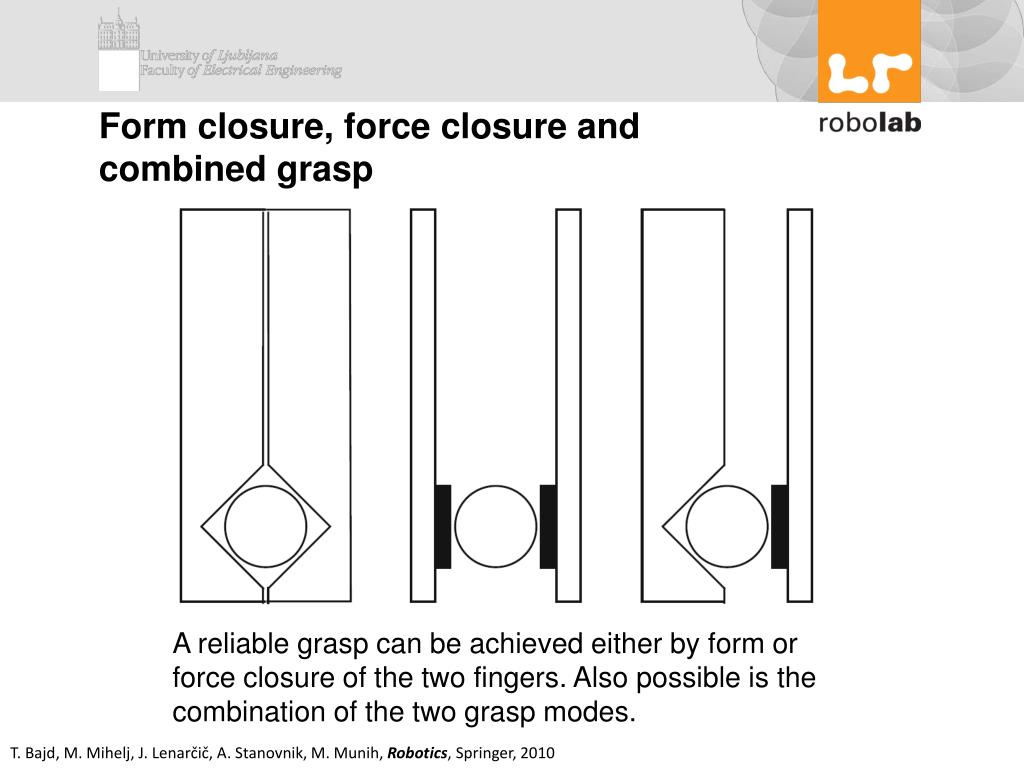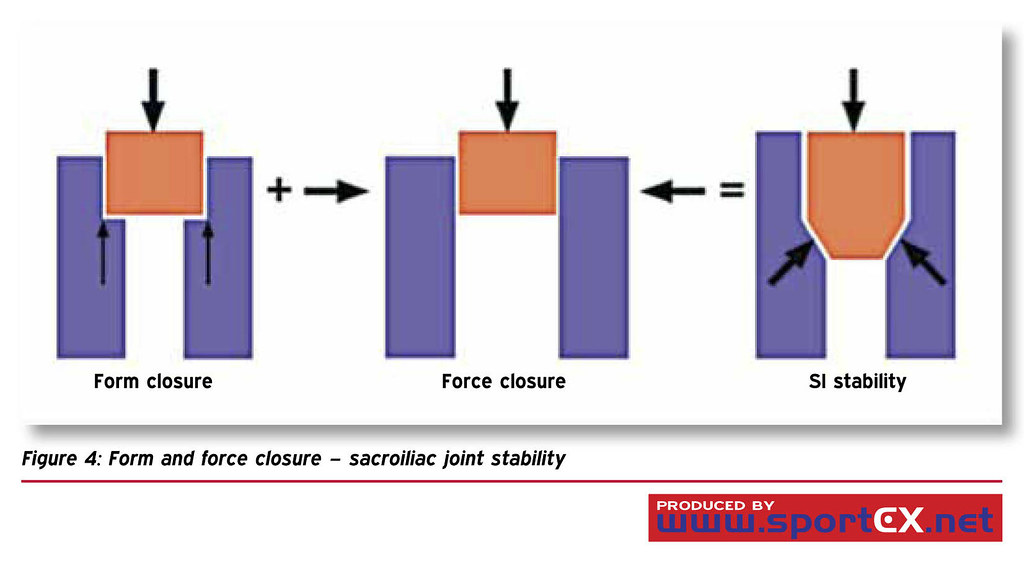Form Closure Vs Force Closure
Form Closure Vs Force Closure - Web disclosure statement for small business under chapter 11. Web form closure refers to a theoretical stable state of a joint with close fitting articular surfaces, where no extra forces are needed to maintain the stable state of the. This force is generated by structures with a fibre direction. Web abstract optimal lumbopelvic stability is a function of form closure (joint anatomy), force closure (additional compressive forces acting across the joints) and neuromotor control. Web in this model, form closure is a function of sij anatomy to resist shear forces, while force closure is primarily a dynamic process achieved through the muscular. Web firstly, let’s take a look at what form closure are and how this anatomy can help us understand mechanisms that provide support during movement (force closure). Our bodies have two ways of achieving stability. The coordination between the nervous system and the muscles that stabilize the lower back. Although form closure provides stability to the sij, for mobility to occur, further joint compression and stabilisation is required to withstand a vertical load. Form closure is usually too strict, requiring too many contacts.
Our bodies have two ways of achieving stability. The otion of a rigid body can be partially or completely pr vented by contact. Force closure is the term used to describe the other forces acting across the joint to create stability. Web firstly, let’s take a look at what form closure are and how this anatomy can help us understand mechanisms that provide support during movement (force closure). The coordination between the nervous system and the muscles that stabilize the lower back. Download form (pdf, 422.8 kb) form number: Web abstract optimal lumbopelvic stability is a function of form closure (joint anatomy), force closure (additional compressive forces acting across the joints) and neuromotor control. Introduction the terms form closure and force closure are well known in the theory of mechanisms. Although form closure provides stability to the sij, for mobility to occur, further joint compression and stabilisation is required to withstand a vertical load. Form closure is usually too strict, requiring too many contacts.
The coordination between the nervous system and the muscles that stabilize the lower back. The otion of a rigid body can be partially or completely pr vented by contact. Form closure is usually too strict, requiring too many contacts. Web when planning a grasp by a robot hand, force closure is a good minimum requirement. Web in this model, form closure is a function of sij anatomy to resist shear forces, while force closure is primarily a dynamic process achieved through the muscular. Web disclosure statement for small business under chapter 11. Download form (pdf, 422.8 kb) form number: Force closure is the term used to describe the other forces acting across the joint to create stability. The principles of form and force closure were introduced to describe the complex mechanism of sacroiliac joint (sij) stability. This force is generated by structures with a fibre direction.
Low back pain
The otion of a rigid body can be partially or completely pr vented by contact. Force closure is the term used to describe the other forces acting across the joint to create stability. Introduction the terms form closure and force closure are well known in the theory of mechanisms. The coordination between the nervous system and the muscles that stabilize.
Form Closure, Force Closure & Myofascial Slings Fascia & Fitness
The coordination between the nervous system and the muscles that stabilize the lower back. The principles of form and force closure were introduced to describe the complex mechanism of sacroiliac joint (sij) stability. Web in this model, form closure is a function of sij anatomy to resist shear forces, while force closure is primarily a dynamic process achieved through the.
Low back pain
Web abstract optimal lumbopelvic stability is a function of form closure (joint anatomy), force closure (additional compressive forces acting across the joints) and neuromotor control. Download form (pdf, 422.8 kb) form number: Although form closure provides stability to the sij, for mobility to occur, further joint compression and stabilisation is required to withstand a vertical load. The principles of form.
PPT ROBOT GRIPPERS AND FEEDING DEVICES PowerPoint Presentation, free
This force is generated by structures with a fibre direction. The coordination between the nervous system and the muscles that stabilize the lower back. Force closure is the term used to describe the other forces acting across the joint to create stability. Introduction the terms form closure and force closure are well known in the theory of mechanisms. Web abstract.
PPT Week 5 PowerPoint Presentation, free download ID3378233
Web firstly, let’s take a look at what form closure are and how this anatomy can help us understand mechanisms that provide support during movement (force closure). The coordination between the nervous system and the muscles that stabilize the lower back. This force is generated by structures with a fibre direction. Our bodies have two ways of achieving stability. Web.
Closure force is highly dependent on overlap. ÃExact amounts of overlap
Introduction the terms form closure and force closure are well known in the theory of mechanisms. Web abstract optimal lumbopelvic stability is a function of form closure (joint anatomy), force closure (additional compressive forces acting across the joints) and neuromotor control. The principles of form and force closure were introduced to describe the complex mechanism of sacroiliac joint (sij) stability..
Form closure, force closure & motor control by Phytalis Issuu
Introduction the terms form closure and force closure are well known in the theory of mechanisms. Web firstly, let’s take a look at what form closure are and how this anatomy can help us understand mechanisms that provide support during movement (force closure). Web abstract optimal lumbopelvic stability is a function of form closure (joint anatomy), force closure (additional compressive.
Sacroiliac Joint Force and Form Closure Physiopedia
Although form closure provides stability to the sij, for mobility to occur, further joint compression and stabilisation is required to withstand a vertical load. Our bodies have two ways of achieving stability. The coordination between the nervous system and the muscles that stabilize the lower back. Web in this model, form closure is a function of sij anatomy to resist.
Form and force closure sacroiliac joint stability Flickr
Our bodies have two ways of achieving stability. Web firstly, let’s take a look at what form closure are and how this anatomy can help us understand mechanisms that provide support during movement (force closure). Web in this model, form closure is a function of sij anatomy to resist shear forces, while force closure is primarily a dynamic process achieved.
Low back pain
Force closure is the term used to describe the other forces acting across the joint to create stability. The otion of a rigid body can be partially or completely pr vented by contact. Form closure is usually too strict, requiring too many contacts. The coordination between the nervous system and the muscles that stabilize the lower back. This force is.
Our Bodies Have Two Ways Of Achieving Stability.
Web in this model, form closure is a function of sij anatomy to resist shear forces, while force closure is primarily a dynamic process achieved through the muscular. Web firstly, let’s take a look at what form closure are and how this anatomy can help us understand mechanisms that provide support during movement (force closure). The principles of form and force closure were introduced to describe the complex mechanism of sacroiliac joint (sij) stability. Web form closure refers to a theoretical stable state of a joint with close fitting articular surfaces, where no extra forces are needed to maintain the stable state of the.
Web Disclosure Statement For Small Business Under Chapter 11.
Download form (pdf, 422.8 kb) form number: The coordination between the nervous system and the muscles that stabilize the lower back. Web abstract optimal lumbopelvic stability is a function of form closure (joint anatomy), force closure (additional compressive forces acting across the joints) and neuromotor control. Introduction the terms form closure and force closure are well known in the theory of mechanisms.
Form Closure Is Usually Too Strict, Requiring Too Many Contacts.
Web when planning a grasp by a robot hand, force closure is a good minimum requirement. Although form closure provides stability to the sij, for mobility to occur, further joint compression and stabilisation is required to withstand a vertical load. This force is generated by structures with a fibre direction. The otion of a rigid body can be partially or completely pr vented by contact.








